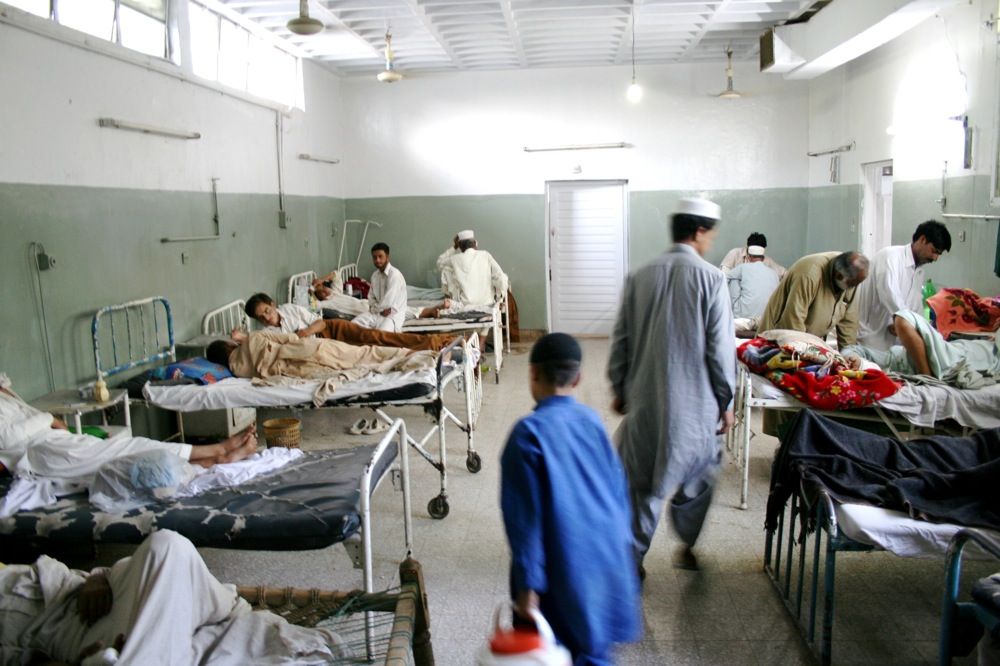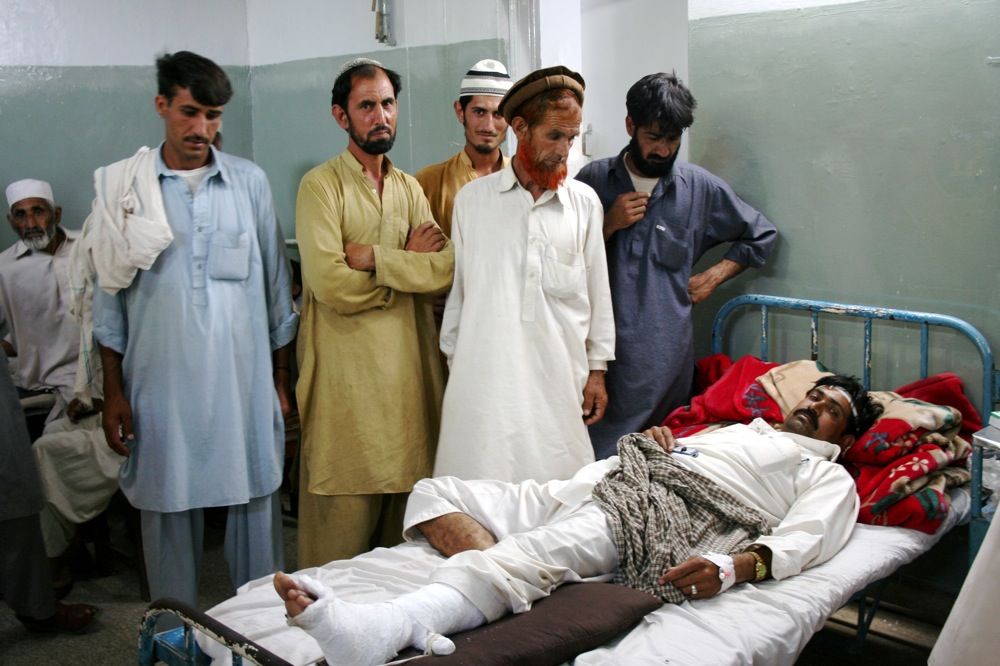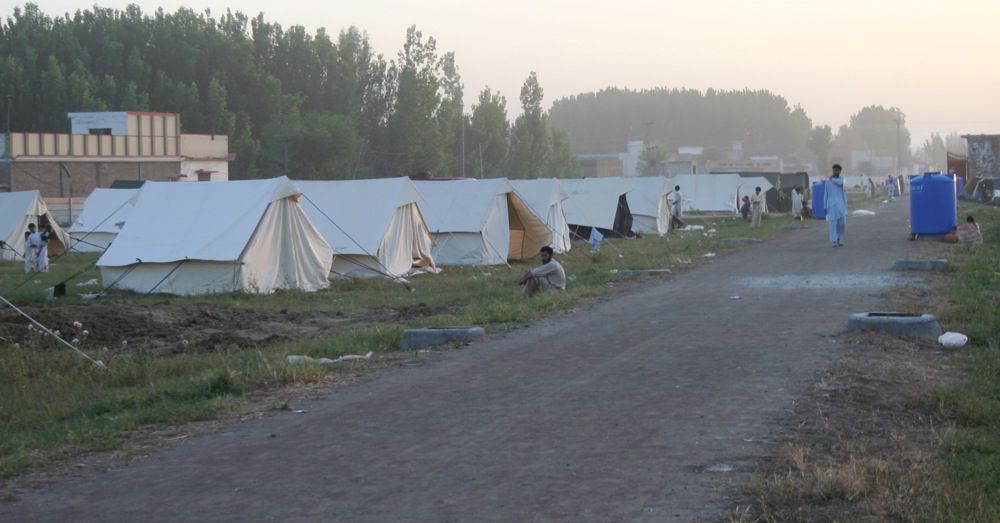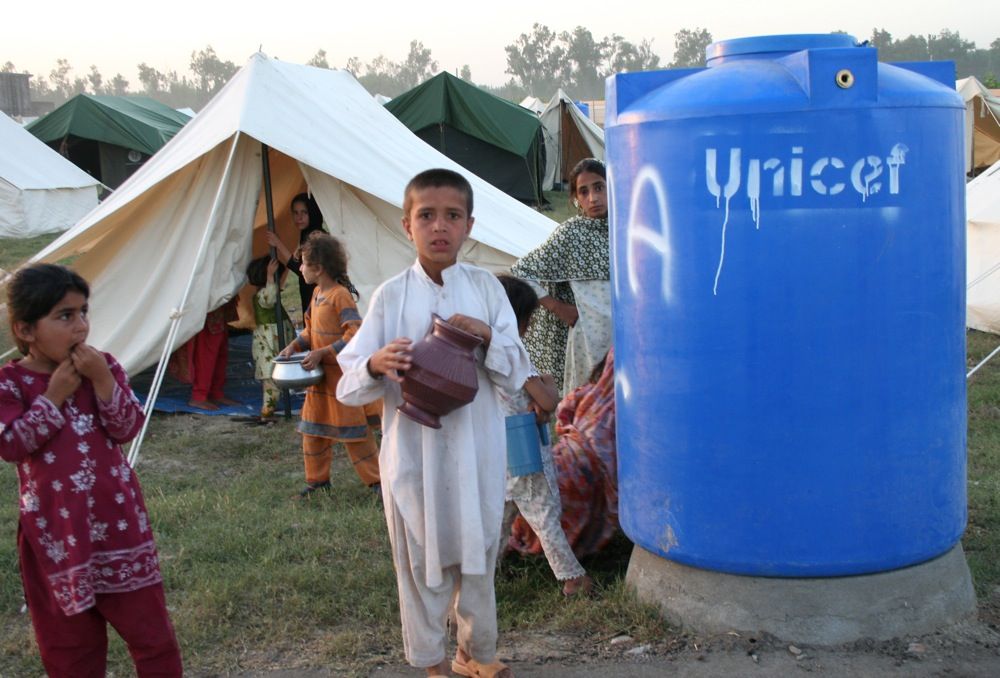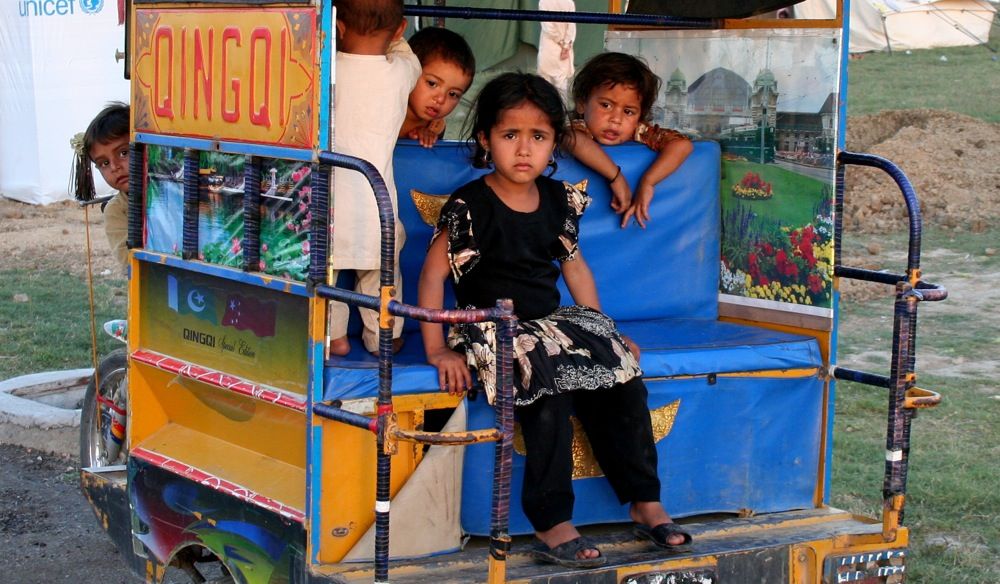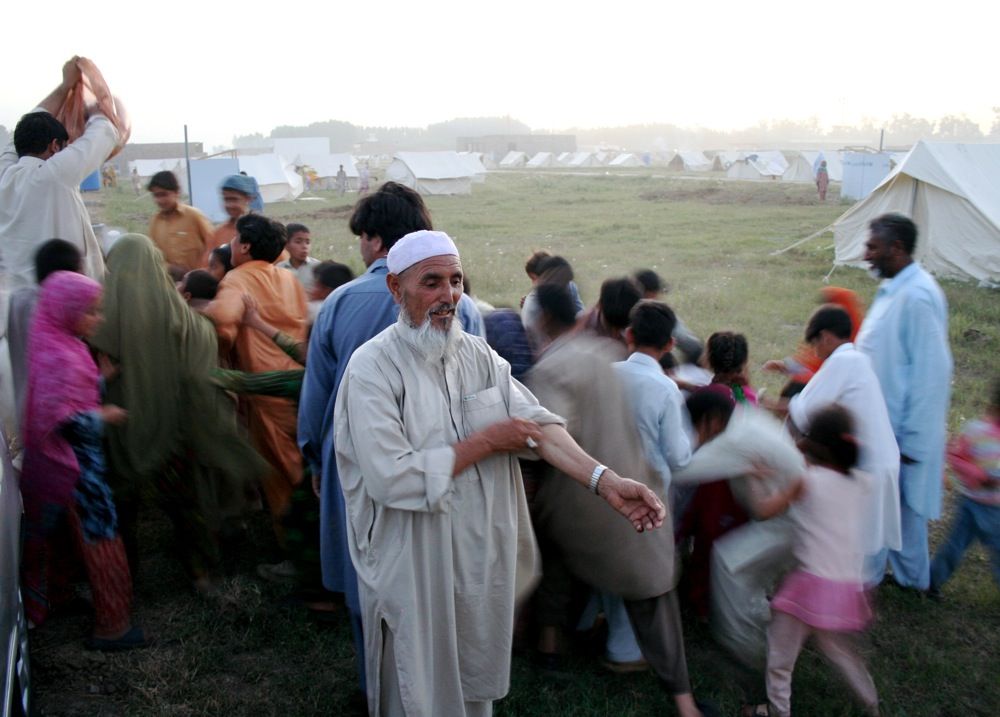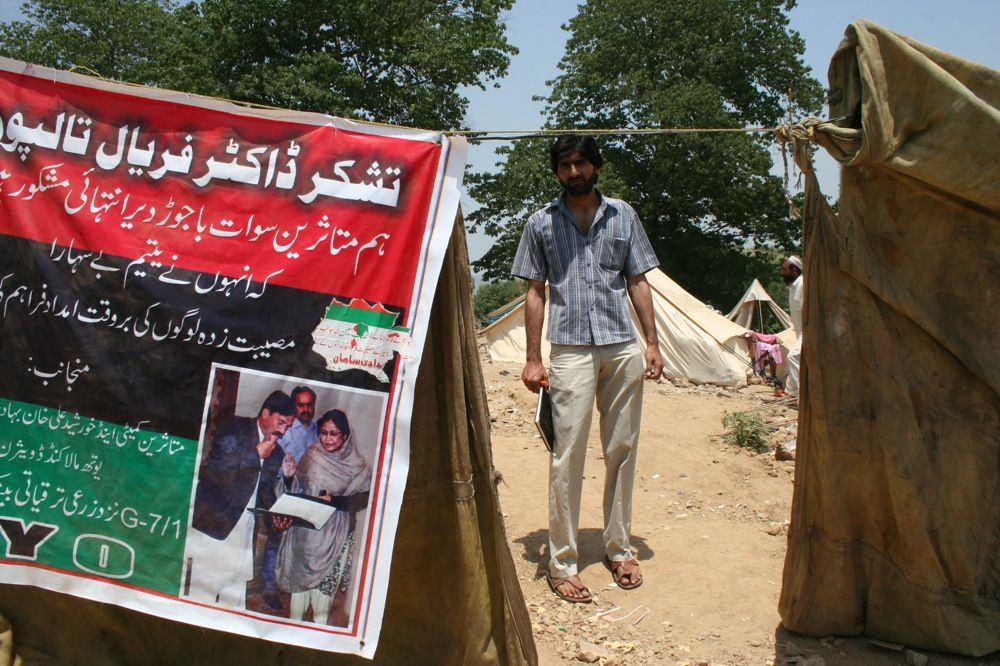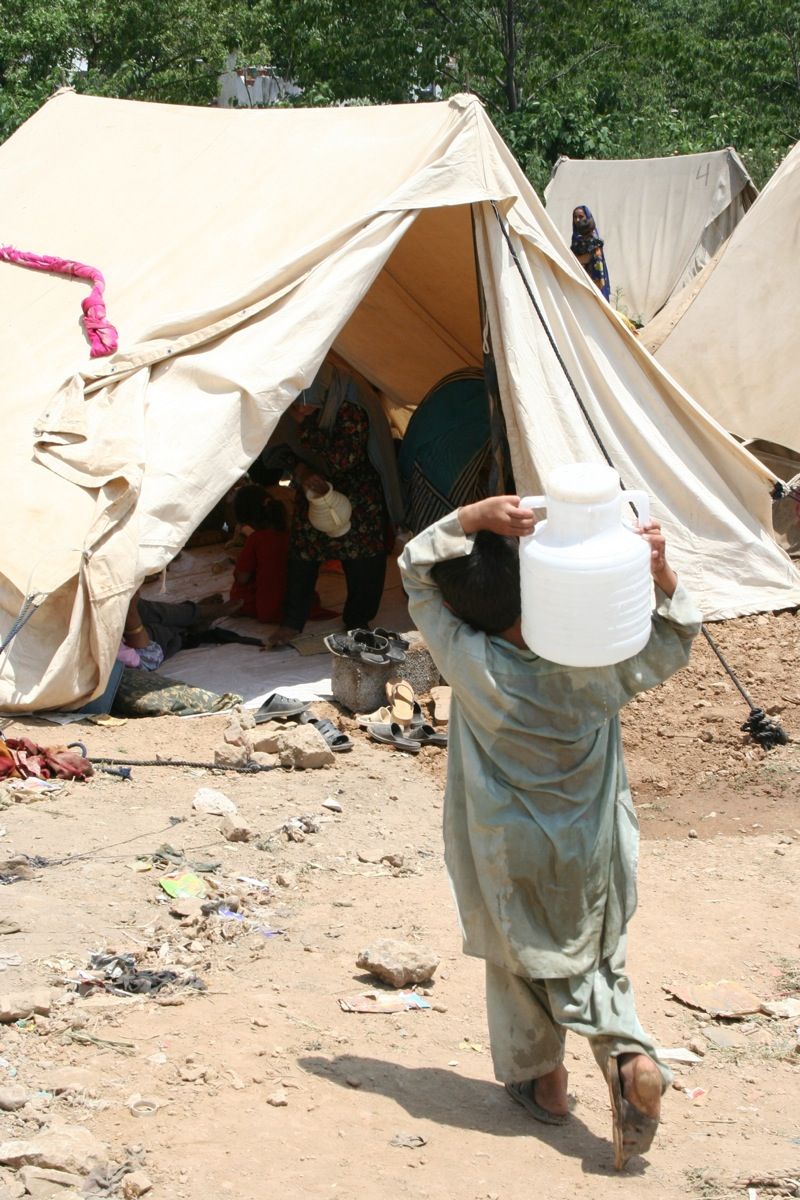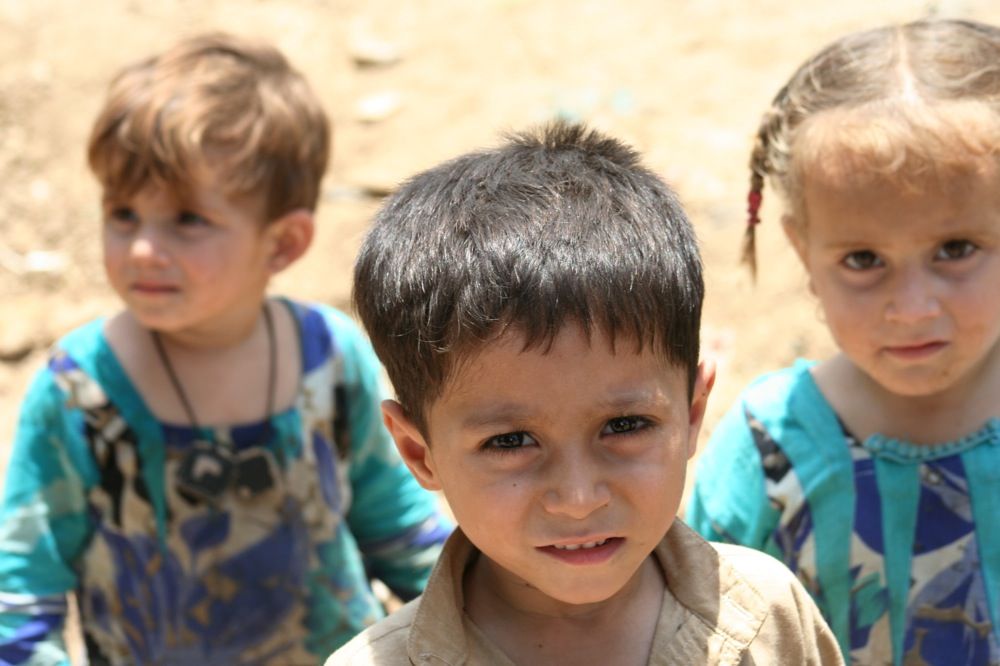Zeeshan Khan, a 17-year-old engineering student, says he knows who Pakistanis blame for what has become the largest migration in their country's history. "These people are coming due to the bombing," he said, gesturing to the thousands of refugees milling around the Mardan refugee camp. "Due to the jet artillery, the F-16s, the heavy weapons. All our houses are destroyed."
More than 900,000 people have left their homes in and around Swat valley in the last few weeks, adding to a total of 1.4 million people displaced so far by fighting between the Pakistani Army and militants. Over the last few days, Pakistani officials have vowed not only to win the ongoing offensive against militants, but also to win the country's "hearts and minds" by limiting collateral civilian damage and providing humanitarian assistance.
But while there is widespread public support in Pakistan for the campaign against the militants, the loss of civilian life and the ensuing humanitarian crisis threaten to erode it. "The issue is whether they can sustain the credibility of the people and to isolate the extremists." says Khalid Rahmin, director of the Institute of Policy Studies in Islamabad. "So far not many people have been speaking against it. But for how long? People are already starting to recoil."
Most of these photos were taken Wednesday in Mardan, a main district south of the fighting, where a hospital treats those injured in the crossfire and a nearby refugee camp is swelling with newcomers. While 90 percent of the refugees rely on relatives for support, some have made it -- by foot, taxi, and transport truck -- all the way to Islamabad, 60 miles from the fighting, where the rest of the photos were taken.
